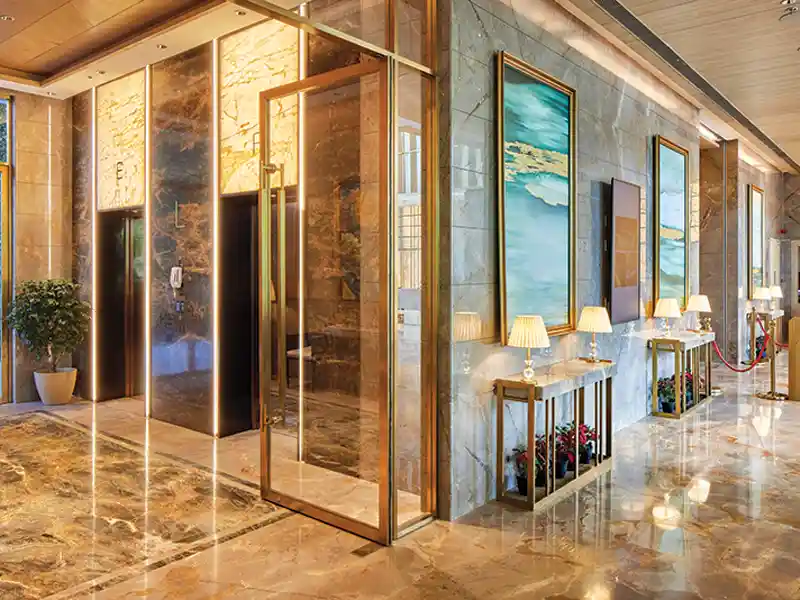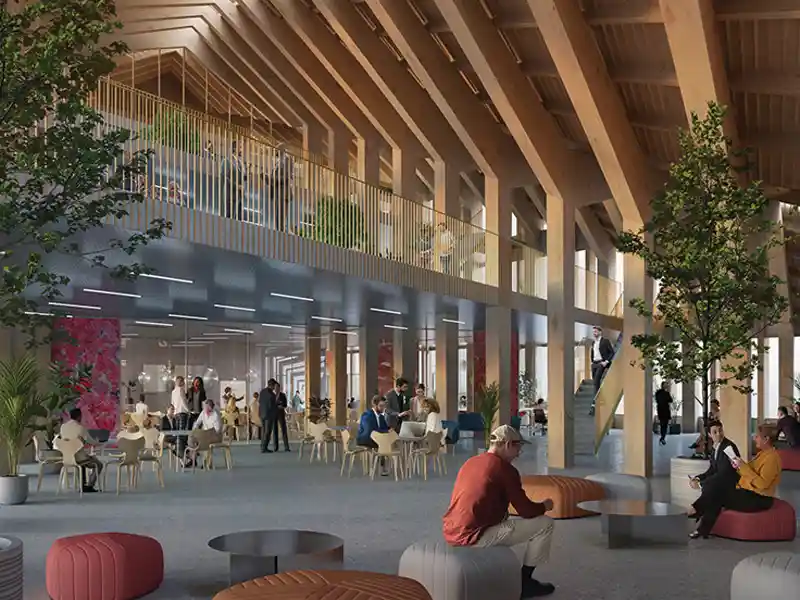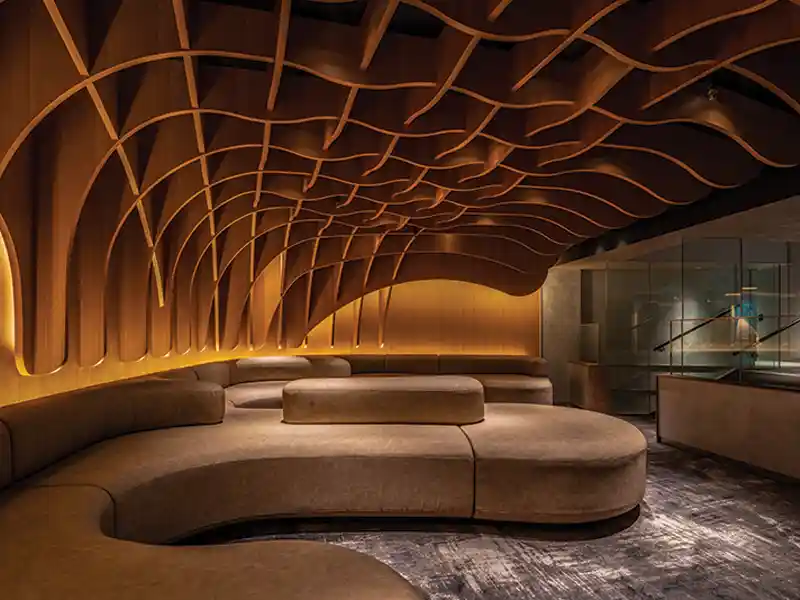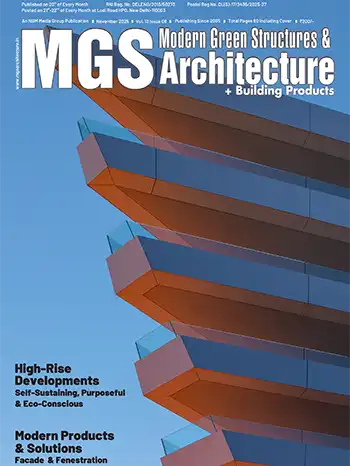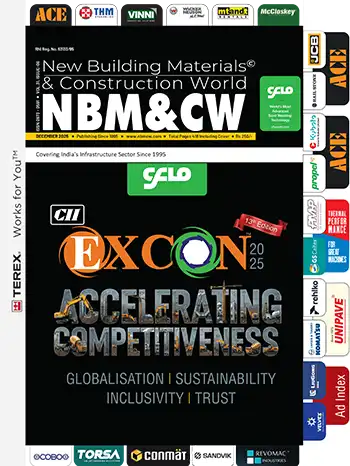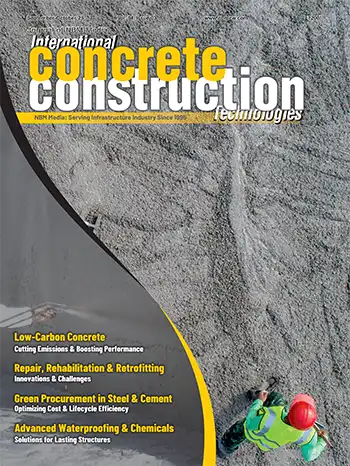Sanjay Seth, Vice President & CEO, GRIHA Council and Senior Director, Sustainable Infrastructure Programme, TERI
How can architects through their designs, and developers through their construction practices, ensure waste-free construction?
Architects and developers play pivotal roles in ensuring waste-free construction through their respective design and construction practices. As architects, the focus should be on smart design that prioritizes resource efficiency from the outset. By embracing principles of modular design, prefabrication, and standardized components, architects can reduce construction material waste significantly. Utilising building materials that are locally sourced and recyclable ensures minimal impact on the environment. During the material selection process, architects must consider the building’s lifecycle, ensuring that the design allows for easy disassembly and reuse of materials at the end of the building’s life. Atal Akshaya Urja Bhawan
Atal Akshaya Urja BhawanDevelopers, on the other hand, have the responsibility of implementing these designs through efficient construction practices. By using advanced construction technologies like 3D printing and automated building processes, they can reduce construction waste, enhance precision and reduce errors. They should implement a robust construction waste management system, focusing on on-site segregation, recycling, and reuse of materials during the phase of construction. Developers can collaborate with waste management entities to ensure that construction debris is diverted from landfills, fostering a pathway to circular economy.
What approach should India adopt to balance cost-effectiveness and sustainability in construction and development?
A multi-pronged approach that integrates informed decision-making, enables implementation and encourages innovation needs to be adopted to balance cost-effectiveness and sustainability in construction and development. The most effective and efficient approach is to incorporate green building features in the initial design stages of the building.Green building materials are comparable in price to conventional building materials. One can also encourage the reuse of construction waste (e.g., concrete recycling, salvaging bricks, etc.) and promote the use of upcycled or repurposed materials in construction.
 Bharat Mandapam, New Delhi
Bharat Mandapam, New DelhiConsidering India’s varied topography, population growth, and environmental concerns, the country has distinct socio-economic conditions, existing infrastructure, and regional challenges. Hence, India’s approach to sustainable construction needs to integrate both modern technologies and traditional, locally relevant solutions.
India’s climate significantly varies from arid to tropical rainforests. Building climate-responsive infrastructure whilst ensuring cost-effectiveness, we must promote the implementation of passive cooling and heating strategies that account for regional differences and reduce energy needs. For example, in hot regions, buildings can be designed with thick walls, courtyards, and shaded verandas to keep interiors cool. In cities like Delhi and Mumbai, where air conditioning is a major energy consumer, incorporating natural ventilation systems and using daylight to reduce the need for artificial lighting and cooling can be cost-effective and sustainable at the same time.
At the policy level, the government could incentivize companies that focus on cost-effective, eco-friendly innovations and the development of smart and sustainable technologies, to promote local manufacturing of green construction materials.
The most effective and efficient approach is to incorporate green building features in the initial design stages of the building.
Sanjay Seth
How can architects and developers ensure that buildings are constructed to be more resilient to extreme weather?
One of the major climate change concerns faced by rapidly urbanizing cities is coping with rising temperatures and the increased demand for cooling, especially in the Indian subcontinent. The growing intensity and frequency of heatwaves, with temperatures in cities like Delhi soaring up to 50°C, are extreme conditions that have put immense pressure on urban infrastructure, particularly power grids, as cities struggle to meet the rising demand for electricity. In addition, the rapid pace of construction and urbanization has increased the problem, contributing to environmental degradation and human health challenges. New Parliament Building, New Delhi
New Parliament Building, New DelhiGreen buildings play a significant role in addressing these challenges by incorporating energy-efficient designs, sustainable materials, and strategic design planning to provide a comprehensive solution to the heat stress issue. The contributory factors in aggravating urban heat stress are rapidly decreasing green cover, release of anthropogenic heat from mechanical systems, increasing concrete surface areas, increasing use of personal vehicles, etc.
A basic, but crucial component in cooling cities is enhancing and promoting greenery, through trees, parks and artificial forests – at both building and urban scales. By providing shade, absorbing CO2 and releasing oxygen, green spaces help create a cooler microclimate, reducing the urban heat island effect.
 ITC Kohenur, Hyderabad
ITC Kohenur, HyderabadSimilarly, the implementation of cool or green roofs can lower temperatures inside buildings and reduce the heat island effect across the city, when mitigation planning is adopted at an urban planning scale. Smarter urban planning, which incorporates more trees, open spaces, and water bodies is the need of the moment. This design approach not only cools the environment but also enhances well-being by creating leisure and recreation spaces; and reduces reliance on energy-intensive air conditioning systems. GRIHA - certified projects such as Atal Akshaya Urja Bhawan, Bharat Mandapam and the New Parliament Building in New Delhi, and the ITC Kohenur in Hyderabad, exemplify such a design approach.


